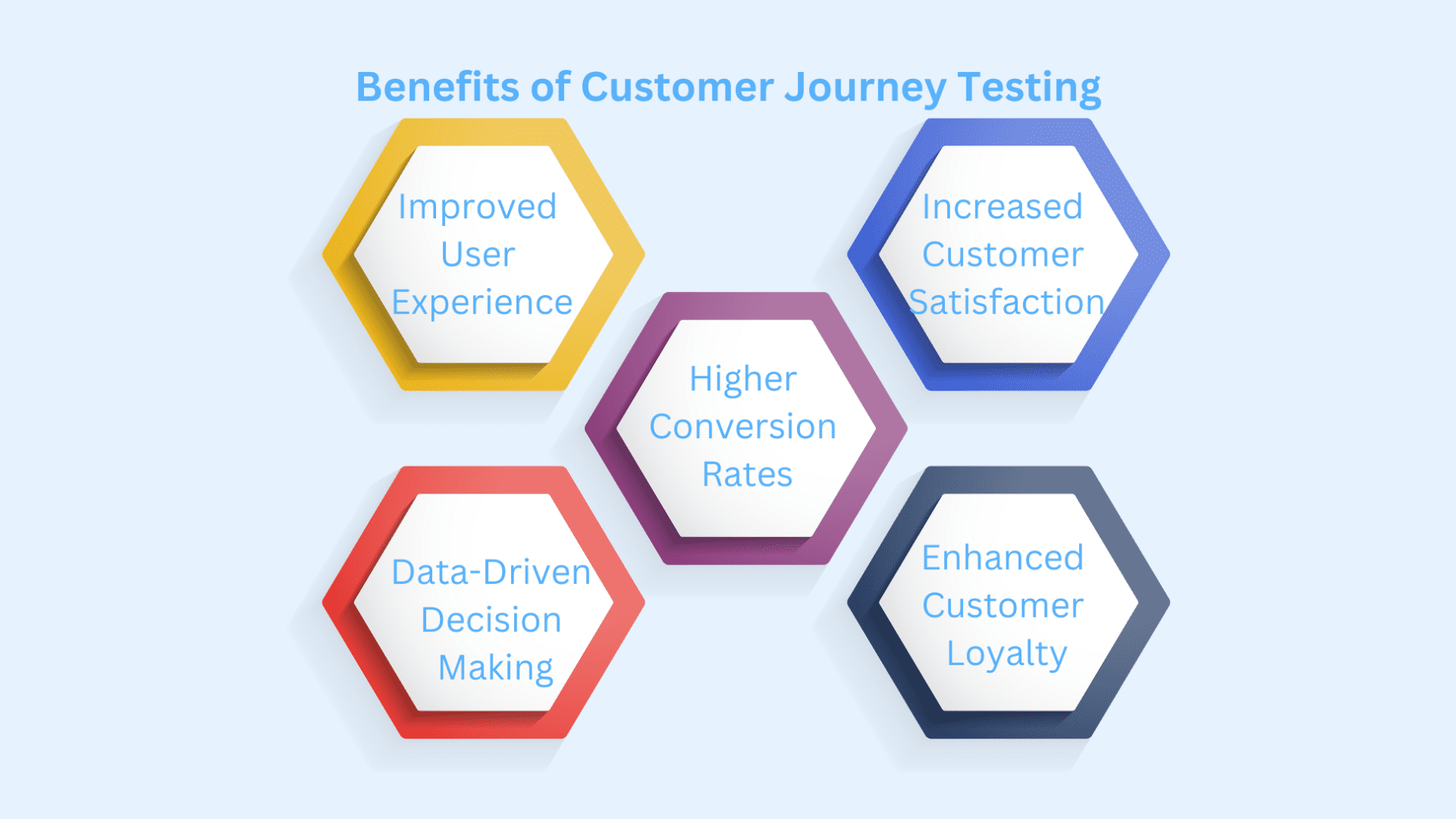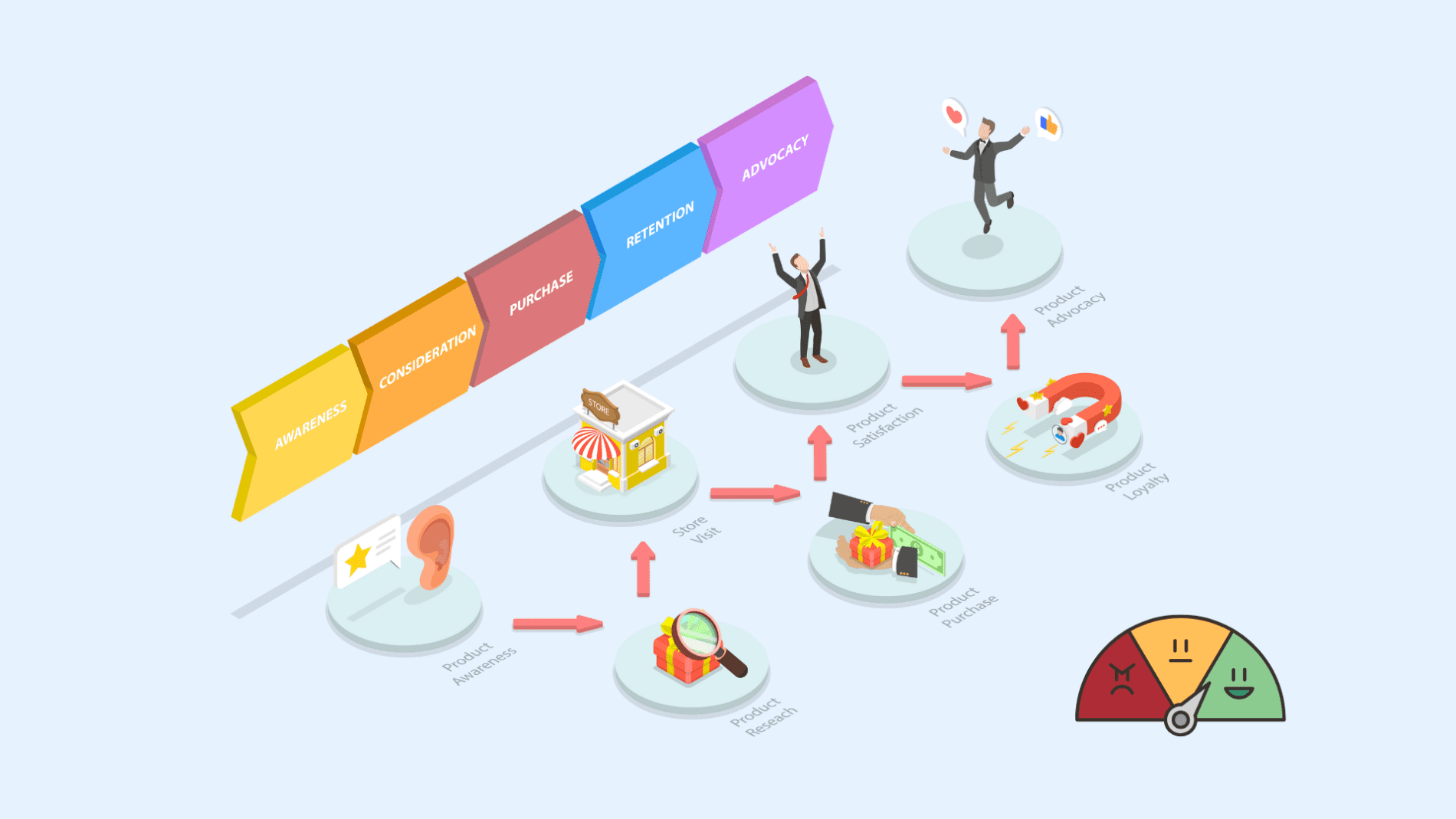Customer Journey : Enhancing the User Experience

Understanding your customers’ journey is essential in today’s competitive market. Each interaction, from initial awareness to post-purchase engagement, shapes their experience with your brand.
Customer journey testing helps optimize the user experience by analyzing how users engage with your product or service at every stage. This testing type identifies pain points, improves usability, and ensures your offerings meet customer expectations.
In this guide, we’ll explain what customer journey testing is and why it matters. We’ll walk you through the testing process, explore its key benefits, and highlight common challenges businesses face.
You’ll learn how to use journey testing to improve the user experience, boost customer satisfaction, and increase loyalty. By the end, you’ll have actionable insights to enhance the entire customer lifecycle, from first contact to long-term relationships.
Let’s get started.
Table of Contents
- What is Customer Journey Testing?
- Benefits of Customer Journey Testing
- Challenges of Customer Journey Testing
- Customer Journey Testing Process
- Final Thoughts
What is Customer Journey Testing?
Customer journey testing is the process of examining how users interact with your digital products.
It covers every stage of their experience —from the first moment of awareness to post-purchase engagement. The goal is to ensure every interaction is smooth, effective, and meets customer expectations.
The purpose of customer journey testing is to identify friction points, usability issues, and inconsistencies with your software. These problems can create obstacles that impact the overall user experience.
By testing various touchpoints, businesses can pinpoint where things go wrong, whether it’s a complicated checkout process or a lack of product information.
Customer journey testing is crucial for improving customer satisfaction. In today’s competitive market, delivering a seamless experience is essential for building loyalty and keeping customers engaged.
When businesses understand the entire journey, they can make data-driven improvements. This leads to higher conversion rates, increased engagement, and stronger customer retention.
Ultimately, customer journey testing helps brands meet and exceed customer expectations, ensuring long-term success.
Customer journey testing analyzes specific interactions and isolates individual use cases to refine and improve the customer experience at every touch point. It involves usability testing, UX testing, and user acceptance testing (UAT) to ensure that the product or service meets the needs and expectations of the customer at each stage of their journey.

Benefits of Customer Journey Testing

Customer journey testing offers many advantages for businesses looking to enhance their user experience and drive better outcomes.
By analyzing how customers interact with your brand at each touchpoint, you can gain valuable insights that lead to improved satisfaction, loyalty, and business growth.
Improved User Experience
Customer journey testing helps identify pain points in the user experience. Whether it’s a confusing website, slow checkout, or unclear product information, testing shows where users encounter obstacles.
Addressing these issues creates a smoother, more enjoyable experience. A better user experience encourages customers to move through their journey without frustration.
Increased Customer Satisfaction
When customers can easily navigate your software, they are more likely to feel satisfied. Customer journey testing ensures that each touchpoint is optimized for ease of use.
Customers who have a positive experience are more likely to return, recommend your brand, and become loyal advocates.
Higher Conversion Rates
Customer Journey testing also helps businesses improve conversion rates. By testing different stages of the customer journey, you can identify which elements lead to successful conversions.
For example, improving a landing page’s design or simplifying the checkout process can increase the number of visitors who make a purchase.
Data-Driven Decision Making
Customer journey testing provides valuable data that informs business decisions. With clear insights into user behavior, you can prioritize changes that will have the greatest impact.
This reduces guesswork and helps you make informed, customer-focused decisions.
Enhanced Customer Loyalty
Regularly improving the customer experience based on journey testing builds trust and loyalty. A seamless, positive experience encourages repeat business. Customers who feel valued are more likely to stay loyal to your brand in the long term.
Challenges of Customer Journey Testing
Customer journey testing offers valuable insights, but it also comes with several challenges. Testing the entire customer journey can be complex, and businesses must overcome various obstacles to gather accurate data and make meaningful improvements.
Complexity of the Customer Journey
One of the biggest challenges is the complexity of the customer journey. Customers interact with brands across multiple channels—such as websites, mobile apps, social media, and customer service.
They may engage at different touchpoints or switch devices during their journey. These varying paths make it difficult to track and map the journey accurately.
As a result, creating a clear and consistent picture of the customer experience is often challenging.
Identifying Key Touchpoints
Another challenge is identifying the most important touchpoints to test. With so many interactions across different stages, it can be overwhelming.
Businesses must determine which touchpoints have the most significant impact on customer decisions and satisfaction.
Focusing on too many touch points can dilute efforts, while neglecting key stages can result in missed opportunities for improvement.
Balancing Quantitative and Qualitative Data
Customer journey testing involves both quantitative and qualitative data. Quantitative data, like conversion rates or page load times, provide measurable insights.
On the other hand, qualitative data—such as user feedback—offers a deeper understanding of emotions and motivations.
Balancing these two types of data can be difficult, especially when they provide conflicting results.
Resource and Time Constraints
Testing the customer journey often requires significant time, budget, and manpower. Conducting usability tests, gathering feedback, and analyzing results can be time-consuming.
For small businesses with limited resources, this can become a major hurdle. Without adequate investment, businesses may struggle to implement effective changes.
Overcoming Bias
Finally, bias in testing is another challenge. Whether it’s researcher bias or sample bias, it can skew results and limit the accuracy of insights.
Customer Journey Testing Process
A comprehensive user profile can illuminate a specific user’s interests and motivations. It also lets you create user segments, which in turn help you outline the stages of your customer journey. However, a single customer’s path from their first touch point to the last will always be unique.
Before zeroing in on individual customer experiences, draw a broader picture of your customers and what they want. Product designers create this general understanding by crafting user stories. These stories are based on real-world customer profiles and generalize the steps taken throughout the user journey.
Writing realistic user stories can be difficult without sufficient detail. Examining the user journey provides the overarching perspective to evaluate specific elements of your customer experience without getting mired in excessively particular edge cases.
By understanding your target audience’s needs, expectations, and behaviors, your team can craft a truly satisfying customer experience.
Here are seven simple steps to delivering consistently high-quality customer experiences through customer journey testing:
- Identify the touch points: Start by mapping out all customers’ touch points with your business. This can include everything from initial research to purchase to post-sale support.
- Gather data: Measure user activity at each touch point to understand customer behavior and preferences. This can include surveys, customer feedback, and analytics data.
- Create user personas: Develop personas to better address your target customers and their needs.
- Analyze the data: Identify patterns and trends. Look for areas where customers are dropping off or experiencing problems, as these are opportunities to improve the customer journey.
- Make changes: Use the insights gained from your analysis to change your marketing, sales, and customer support processes.
- Seek feedback: Ask for feedback from customers at every stage of the journey to ensure that you’re meeting their needs and expectations. Use this feedback to improve the customer journey even further.
- Run regular QA tests: Monitor and optimize the customer journey to ensure a positive customer experience.
The last step is of utmost importance. QA ensures a consistent brand UX by monitoring and improving the product or service to meet customer needs. QA is more than simple bug fixing: it continuously improves service reliability.
Final Thoughts
Customer journey testing is an essential tool for understanding how users interact with your brand at every stage.
It helps identify pain points, improve usability, and ensure that each touchpoint meets customer expectations. By optimizing the entire journey, businesses can enhance satisfaction and build long-term loyalty.
However, customer journey testing is not without challenges. It requires careful planning, from pinpointing key touchpoints to balancing quantitative and qualitative data.
Businesses must also navigate resource constraints and potential biases. Despite these challenges, the benefits are clear. Testing improves conversions, boosts customer retention, and strengthens overall brand loyalty.
If you are ready to enhance your customer journey, Testlio is here to help. We offer expert testing services designed to provide valuable insights at every stage of the customer experience.
Start improving your user experience today. Visit Testlio’s customer journey testing solutions and take the first step toward optimizing your customer journey.
